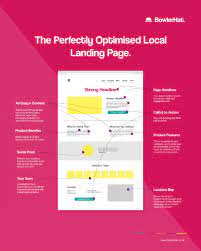The Power of Global SEO
In today’s interconnected world, businesses are no longer confined to a single geographical location. With the rise of the internet and e-commerce, companies have the opportunity to expand their reach globally. However, reaching a global audience is not without its challenges.
One of the key challenges businesses face when targeting international markets is ensuring their online presence is visible and accessible to potential customers around the world. This is where Global Search Engine Optimization (SEO) comes into play.
What is Global SEO?
Global SEO refers to the practice of optimizing a website’s visibility in search engine results pages (SERPs) across multiple countries and languages. It involves tailoring your website’s content, structure, and technical aspects to rank higher in search engines for specific international markets.
Global SEO takes into account various factors such as language preferences, cultural nuances, local search habits, and regional search engines. By implementing effective global SEO strategies, businesses can increase their organic traffic from different countries and improve their overall online presence.
The Benefits of Global SEO
Expanded Reach: By targeting multiple countries and languages, global SEO allows businesses to tap into new markets and reach a wider audience. This can lead to increased brand awareness, customer engagement, and potential sales opportunities globally.
Increased Organic Traffic: Implementing effective global SEO techniques can help improve your website’s visibility in international search results. As a result, you can attract more organic traffic from different regions around the world without relying solely on paid advertising.
Enhanced User Experience: Global SEO involves optimizing your website for different languages and cultures. This includes providing localized content, using appropriate keywords, and ensuring a seamless user experience for visitors from various countries. By catering to the specific needs of your target audience, you can enhance user satisfaction and increase conversions.
Competitive Advantage: Investing in global SEO gives businesses a competitive edge in international markets. By outranking competitors in search engine results, you can establish your brand as a trustworthy and authoritative source, leading to higher credibility and customer trust.
Best Practices for Global SEO
Keyword Research: Conduct thorough keyword research for each target country and language to identify relevant keywords that resonate with local audiences.
Localized Content: Create high-quality, localized content that aligns with the cultural preferences and interests of your target audience in different regions.
Website Localization: Optimize your website’s structure, URLs, meta tags, headings, and alt tags to cater to each target market effectively.
International Link Building: Build high-quality backlinks from reputable websites in different countries to improve your website’s authority and visibility in international search results.
Mobile Optimization: Ensure that your website is mobile-friendly and optimized for different devices as mobile usage continues to grow globally.
In Conclusion
In an increasingly globalized world, global SEO has become essential for businesses aiming to expand their online presence internationally. By implementing effective global SEO strategies, companies can reach new markets, increase organic traffic, enhance user experience, and gain a competitive advantage on a global scale.
If you’re looking to take your business beyond borders and tap into the immense potential of international markets, investing in global SEO is a crucial step towards success.
7 Essential Tips for Mastering Global SEO: Strategies for Multilingual and Regional Search Optimization
- 1. Research target keywords for each global market you want to target.
- 2. Optimize your website’s meta tags, headings, and content for multilingual SEO.
- 3. Use hreflang tags to indicate language and regional targeting to search engines.
- 4. Create separate landing pages or subdomains for different languages or regions.
- 5. Localize your content by adapting it to the cultural preferences and nuances of each target market.
- 6. Build high-quality backlinks from relevant websites in each targeted region or language.
- 7. Monitor and analyze your global SEO efforts using tools like Google Analytics and Search Console.
1. Research target keywords for each global market you want to target.
When implementing a global SEO strategy, it is crucial to conduct thorough research on target keywords for each specific market you aim to target. Understanding the search habits and preferences of your audience in different countries will allow you to optimize your website’s content and structure effectively. By identifying relevant keywords that resonate with local users, you can increase your chances of ranking higher in search engine results and attracting organic traffic from specific global markets. This targeted approach ensures that your website aligns with the language and cultural nuances of each market, ultimately enhancing your visibility and increasing the potential for success in international markets.
2. Optimize your website’s meta tags, headings, and content for multilingual SEO.
When it comes to global SEO, optimizing your website’s meta tags, headings, and content for multilingual SEO is a crucial step. By tailoring these elements to different languages and cultures, you can improve your website’s visibility and relevance in international search results. This involves conducting thorough keyword research for each target language, creating localized content that resonates with local audiences, and ensuring that your meta tags and headings accurately reflect the content in different languages. By implementing multilingual SEO strategies, you can enhance user experience, attract organic traffic from various regions, and effectively communicate your brand message to a global audience.
3. Use hreflang tags to indicate language and regional targeting to search engines.
When it comes to implementing effective global SEO strategies, using hreflang tags is a crucial step. These tags allow you to indicate the language and regional targeting of your website to search engines. By specifying the language and country for each version of your content, search engines can better understand and display the appropriate version to users in different regions. This helps improve the visibility and relevance of your website in international search results, ultimately enhancing user experience and increasing organic traffic from specific target markets. Incorporating hreflang tags is a valuable technique for businesses looking to optimize their global SEO efforts and reach a wider audience across various countries and languages.
4. Create separate landing pages or subdomains for different languages or regions.
Creating separate landing pages or subdomains for different languages or regions is a crucial tip in global SEO. By doing so, businesses can effectively target and cater to the specific needs and preferences of their international audience. These dedicated pages or subdomains allow for localized content, language-specific keywords, and cultural relevance, ensuring a seamless user experience. This approach not only improves search engine visibility but also enhances user engagement and increases the chances of conversions. By investing in separate landing pages or subdomains, businesses can establish a strong online presence in different regions and maximize their global reach.
5. Localize your content by adapting it to the cultural preferences and nuances of each target market.
To effectively target different international markets, it is crucial to localize your content by adapting it to the cultural preferences and nuances of each specific target market. By understanding and incorporating cultural elements into your content, such as language, idioms, imagery, and references, you can create a more personalized and relatable experience for your audience. This localization approach helps establish a deeper connection with potential customers, enhances user engagement, and increases the chances of conversions. By acknowledging and respecting the unique cultural aspects of each market, you can effectively communicate your brand’s message and build trust with your global audience.
6. Build high-quality backlinks from relevant websites in each targeted region or language.
Building high-quality backlinks from relevant websites in each targeted region or language is a crucial aspect of global SEO. These backlinks not only enhance your website’s authority and credibility in the eyes of search engines but also help you establish strong connections with local audiences. By partnering with reputable websites that are relevant to your industry or niche in each target market, you can improve your search engine rankings and increase your visibility among the right audience. This strategic approach to link building ensures that your website receives valuable referral traffic from authoritative sources, ultimately boosting your organic reach and driving more targeted visitors to your site.
7. Monitor and analyze your global SEO efforts using tools like Google Analytics and Search Console.
Monitoring and analyzing your global SEO efforts is crucial for understanding the effectiveness of your strategies and making informed decisions. By utilizing tools like Google Analytics and Search Console, you can gain valuable insights into the performance of your website across different countries and languages. These tools provide data on key metrics such as organic traffic, user behavior, keyword rankings, and more. By regularly monitoring this data, you can identify areas for improvement, track the success of your global SEO campaigns, and make data-driven optimizations to maximize your online visibility and reach in international markets.




